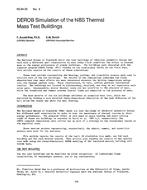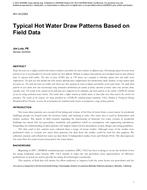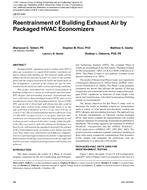Stack effect is a natural phenomenon which occurs in all buildings. In tall buildings, especially during the winter season, it is considered to be the most serious issue than any others which are commonly raised such as wind effect. This paper presents a practical study to minimize the impact of stack effect in a 42-stories office building in extreme winter conditions, -13°C. Both architectural and mechanical drawings were reviewed in order to understand the airflow dynamics and field measurements were carried out to generate the pressure distribution caused by stack effect. Two recommendations were suggested which can reduce the stack effect problems most effectively: increasing the airtightness of building envelope and adding compartmentalization or separation to provide air barrier to the airflow path inside the building. In terms of mechanical approaches, it is suggested that stack effect pressure at higher part of the building can be managed by pressurizing the building using HVAC systems. In order to investigate the pressure and the airflow rates within the building, a detailed network model of the building was developed based on as-built drawings. Various scenarios of airflow simulations were carried out to evaluate the impact of stack effect, wind and the operation of HVAC systems. It was found that stack effect problems can be solved by increasing the airtightness of building envelope, by adding architectural compartmentalization, and by using HVAC systems.
Product Details
- Published:
- 2012
- Number of Pages:
- 10
- File Size:
- 1 file , 2 MB
- Product Code(s):
- D-CCC12-48
- Note:
- This product is unavailable in Russia, Belarus


